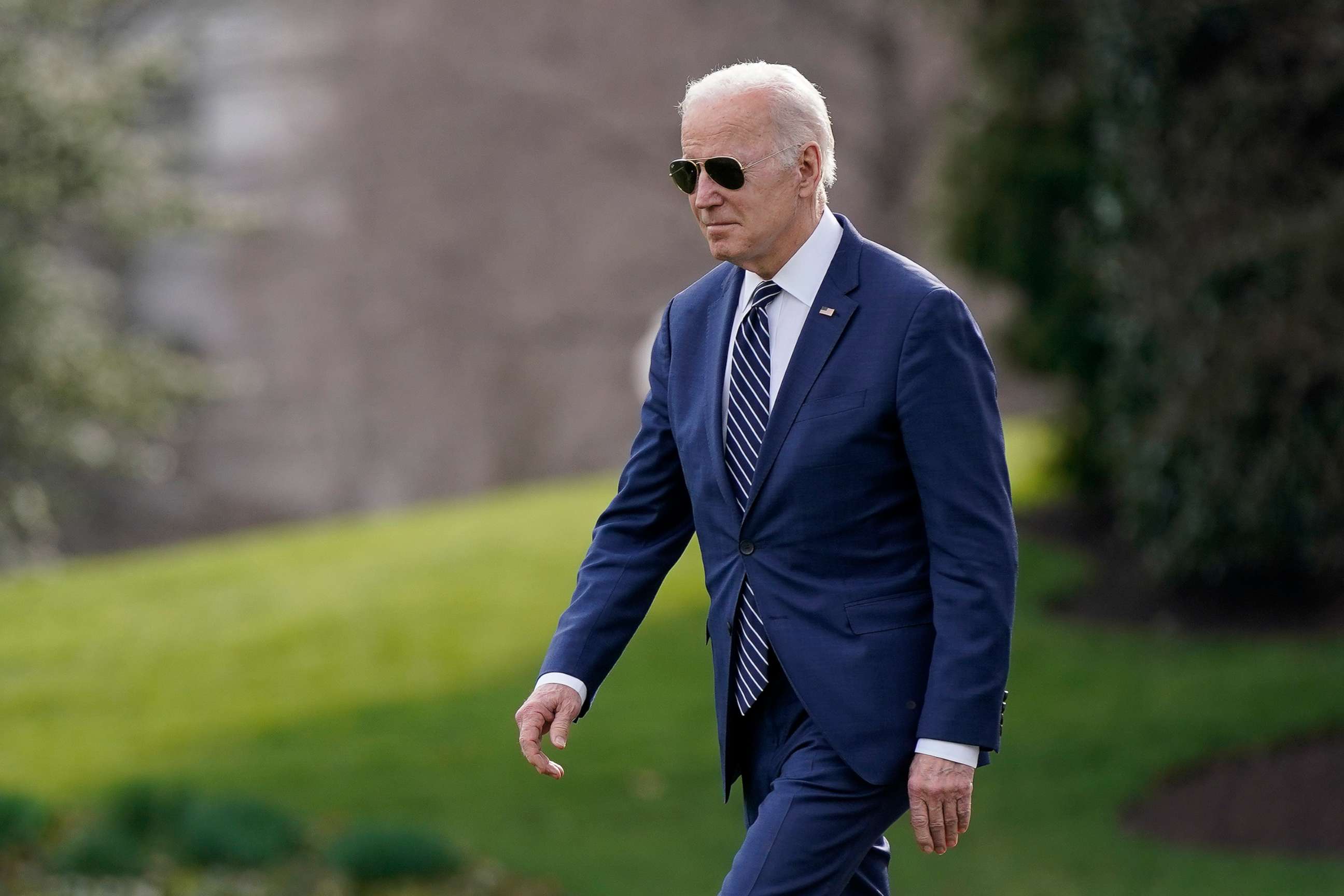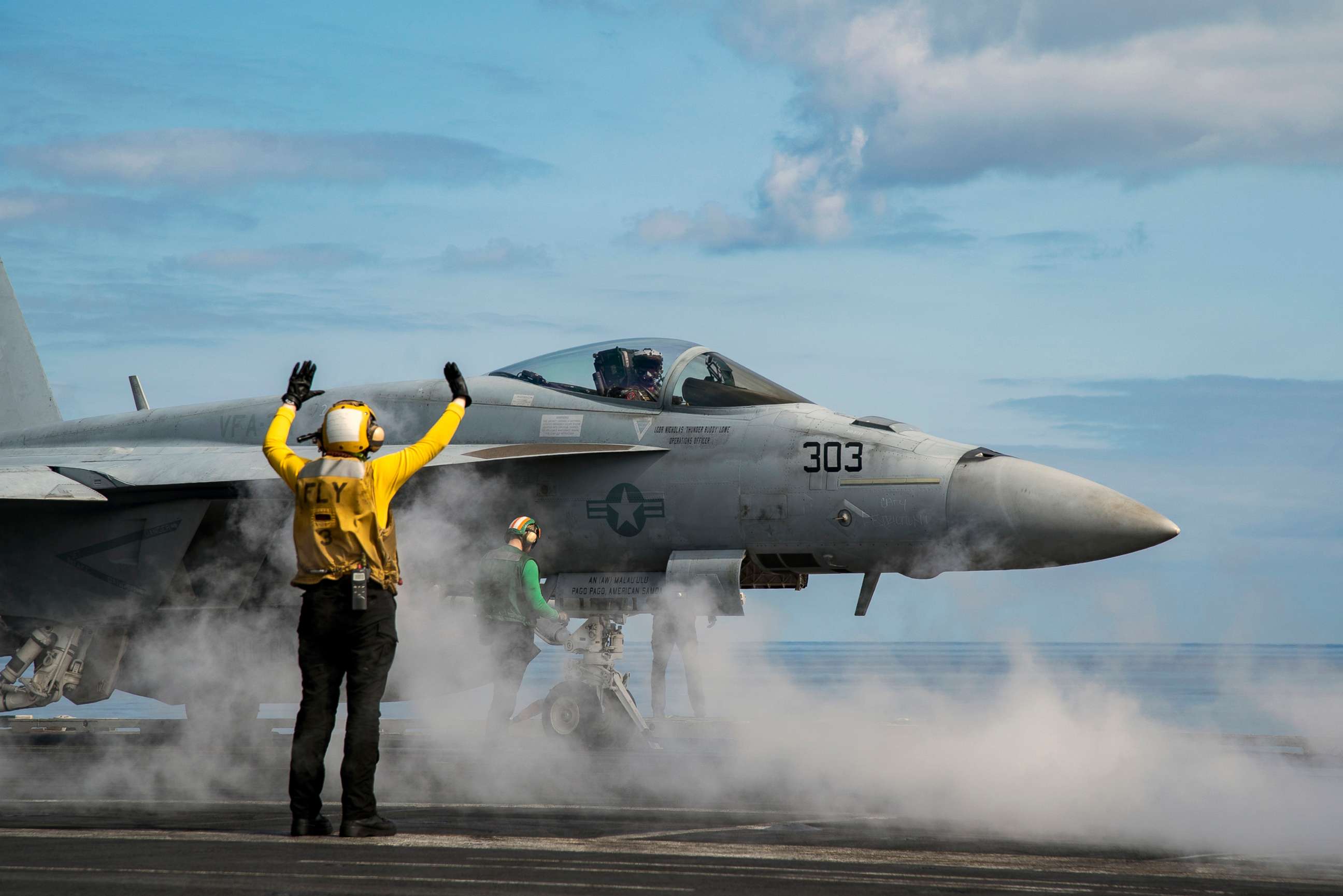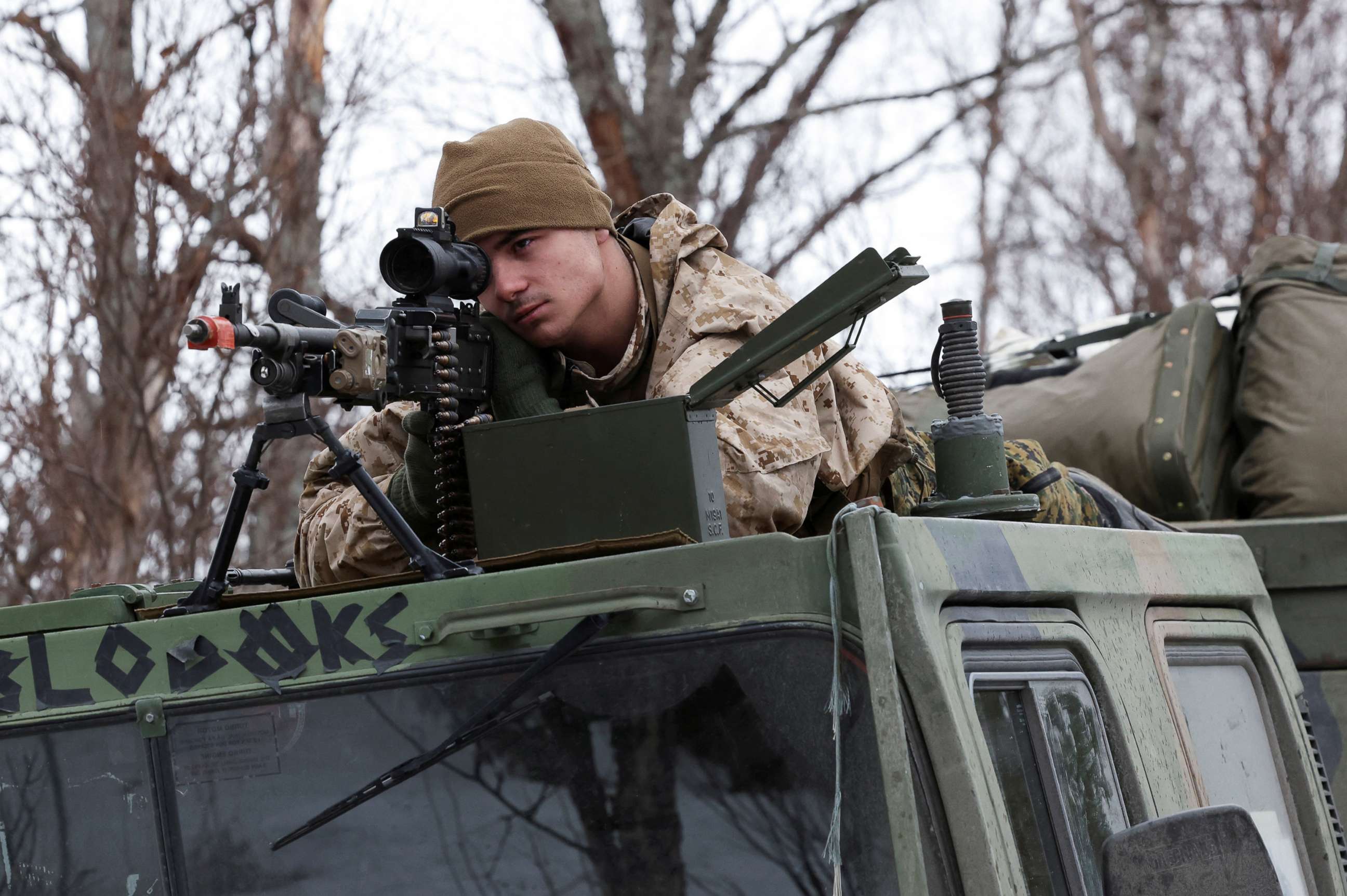Biden's risk-averse approach to Russia could create greater threat, experts say
They say an "emboldened" Putin might be more dangerous than added NATO support.
WARSAW, POLAND -- President Joe Biden's high-stakes summit with other NATO leaders on Thursday will be one of the most scrutinized meetings on the world stage in decades, and could have enormous implications for both the war in Ukraine and the global balance of power.
Despite calls from Ukraine to do more to help stave off Russia's ruthless invasion, Biden has taken a cautious approach -- wary of escalating the conflict by drawing in U.S. forces as part of a more direct NATO response. But after nearly a month of fighting, some foreign policy and national security experts ABC News spoke to say it may be time for the alliance to take on a more direct role.

Preparing for 'the worst case'
Since before the fighting broke out, Biden has insisted that American troops would not fight Russian forces inside Ukraine, warning that going head-to-head would lead to "a third world war."
But Barry Pavel, a former National Security Council senior official during the Bush and Obama administration and the senior vice president and director of the Scowcroft Center for Strategy and Security at the Atlantic Council, says that's far from inevitable.
"There have been other cases where U.S. and Russian forces have unfortunately come into friction and World War III didn't start," Pavel said, characterizing the strategy as simplistic. "There are hundreds of options that could be done between what NATO is doing now and risking World War III."
The greater threat, warns Pavel, might be in leaving Putin unchecked.
"If he is emboldened by success in Ukraine, then he will be more aggressive in his efforts to nibble and to move into areas of perceived weakness in NATO members," he said. "If he achieves his goal, you'll have Russian forces on the borders of seven NATO members, including nuclear forces in Belarus, and so he'll use that new posture to really heighten European insecurity to a great degree."
And it isn’t Biden’s -- or NATO’s -- choice alone. Moscow could also escalate the conflict by striking a NATO member, either intentionally or accidentally, triggering a sweeping response.
"Article 5 -- in the most basic sense -- is NATO's 'Three Musketeers' provision, which is to say, 'all for one and one for all' -- an attack against any member is an attack against every member of NATO," said Sean Monaghan, a former civil servant in the U.K. Ministry of Defence and a visiting fellow at the Center for Strategic and International Studies, calling it "the most important red line in international politics."
"This is a contingency that NATO forces are already preparing for," said Monaghan. "That's what the military does -- prepare for the worst case."
While the response to a Russian strike wouldn’t necessarily need to be eye for an eye, Monaghan says in theory, the alliance would be obligated to provide “an overwhelming response” if any member state was hit.
“The practice, some would say that NATO being collective of 30 nations, that have to reach consensus for any actions to be to be taken, that might hinder a response. But I think in this conflict, NATO has shown itself to be quite a lot more resolute and speedier of action than many people would have predicted,” he added.

The next phase for NATO
While the Biden administration has underscored the power of NATO’s overwhelming unity in the face of Russian aggression, when it comes to charting a path forward to counter the Kremlin, cracks within the alliance are beginning to emerge. While the summit will be an opportunity for the powers to get on the same page, it may also cast a spotlight on areas of disagreement.
For instance, Poland plans to propose a peacekeeping mission to Ukraine -- a move the U.S. has effectively ruled out. Article 5 lays plain that an attack on a member merits a response, but will the alliance retaliate if Russia resorts to chemical weapons in Ukraine? And while NATO may not be willing to establish a no-fly zone over the country, Pavel says that doesn't mean there isn’t a debate to be had about what more can be done to help the country defend its own airspace.
"In terms of the weapons pipeline, we should be doing much more. We can't let the Ukrainians fly aircraft in their own defense? Forget these ridiculous restrictions on what equipment we can provide a sovereign country who asks for it to defend themselves against an invading force" he said, referencing the U.S. and other allies' hesitancy to hand over fighter jets to Ukraine for fear of Russian retaliation.
Pavel added that additional anti-aircraft and anti-ship weaponry, as well as enhanced intelligence support and humanitarian aid on the ground, could go a long way in resistance efforts.
Thomas Graham, a former NSC senior director for Russia and a distinguished fellow at the Council on Foreign Relations, says that beyond discussing support for Ukraine, NATO leaders should use the upcoming summit to make sharpen their signaling to the Kremlin.
"NATO leaders want to make sure that they've done everything that they can in order to deter the Russians," he said. "Have we augmented the forces in Eastern Europe to the appropriate levels? And have we convinced the Russians that in fact we are determined to honor the Article Five guarantee and protect every inch of NATO territory?"
Monahan predicts this week's gathering will result in a reversal to a mindset not seen since the days of the Soviet Union.
"We can foresee it as the beginning of a step change, almost a return to NATO's Cold War posture of, if not territorial defense, then a much increased forward presence designed to deter a Russian regime that is clearly willing to resort to war" he said.

Battle lines of the future
Beyond addressing the immediate crisis, experts say NATO must ensure it is ready to respond to a more aggressive Russia and prepare for the new geopolitical frontier it is forging.
"The war in Ukraine will end at some point will end, but Russia will remain," said Graham. "And what the conflict has demonstrated is that the hopes we had had for integrating Russia into the Euro-Atlantic community are dead."
Pavel says plotting out a strategy not only for ending the conflict -- but for managing exactly how the conflict ends -- will be critical.
"When wars have ended in the past, the new boundaries have been drawn where the force set, through the middle of Germany, through the middle of Berlin," Pavel said. "When the dust settles, where do we want Russian forces to be and where do we want Ukrainian and potentially NATO forces to be?"
Another repercussion may be an onslaught of arms races. Russia's alleged deployment of hypersonic missiles—a technology the U.S. has not yet mastered—is an area of competition, but Pavel says it's not the only one.
"Putin has spent 10, 15 years modernizing the Russian nuclear forces -- a lot of new types of exotic Russian nuclear weapons, pretty significant," he said. "Certainly, the U.S. and some NATO members have nuclear capabilities, but they are aging. They have not been modernized at the pace that we should be doing."
"All of this means that we'll have we'll have a lot more to do, unfortunately, on the security agenda going forward," Pavel added.




